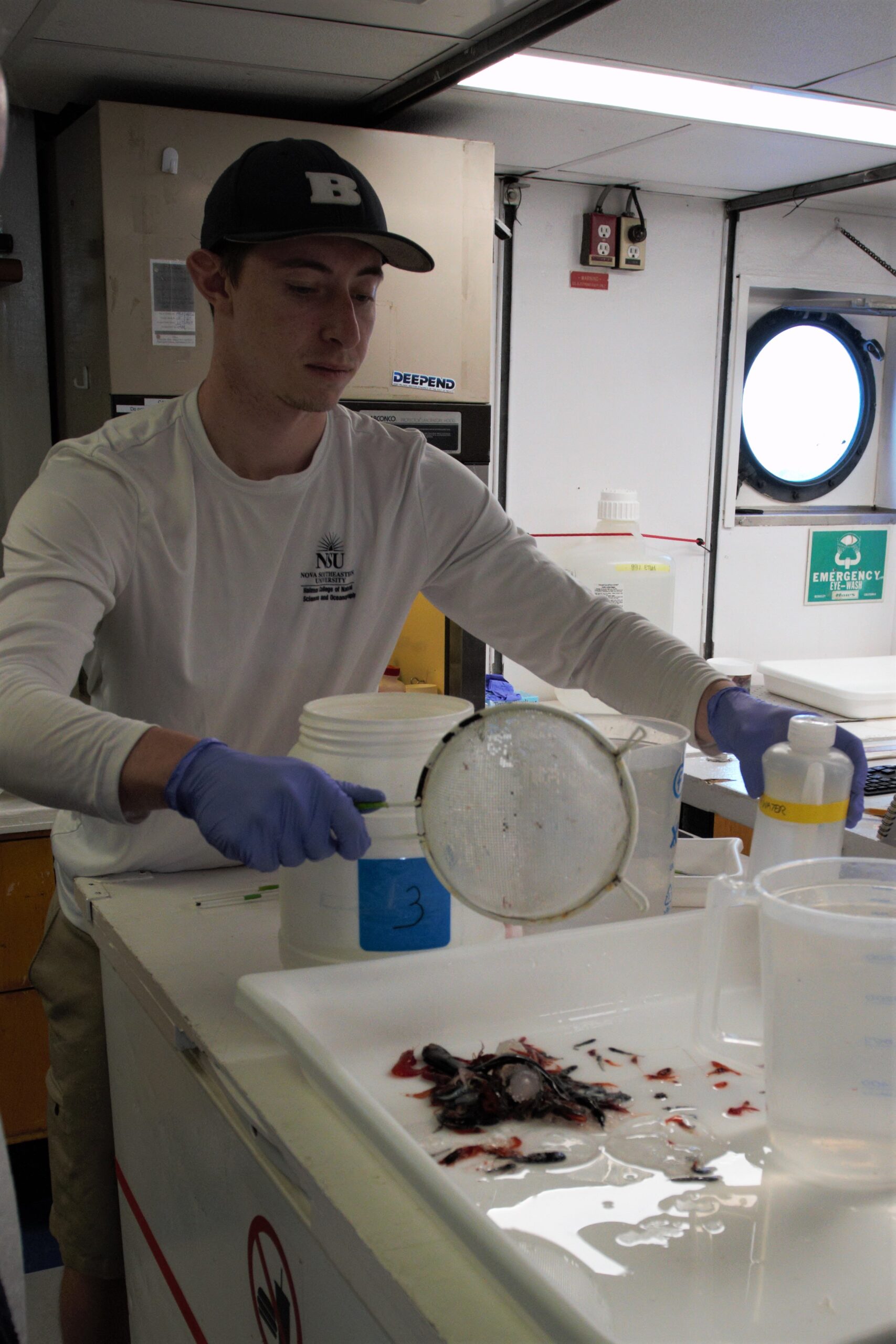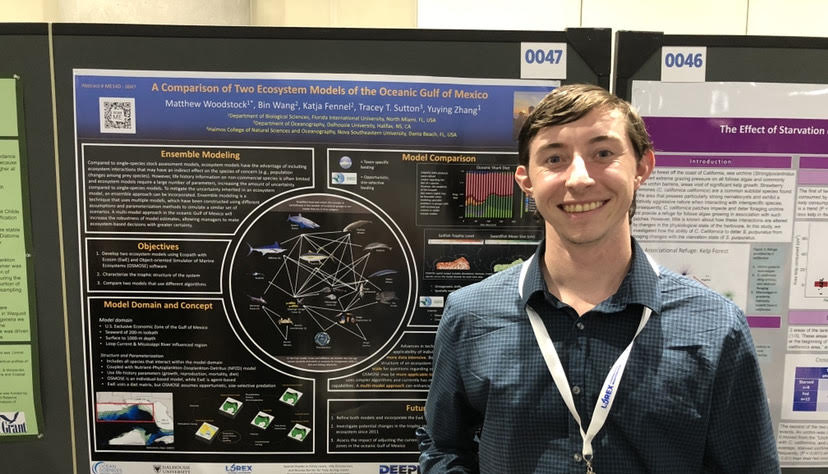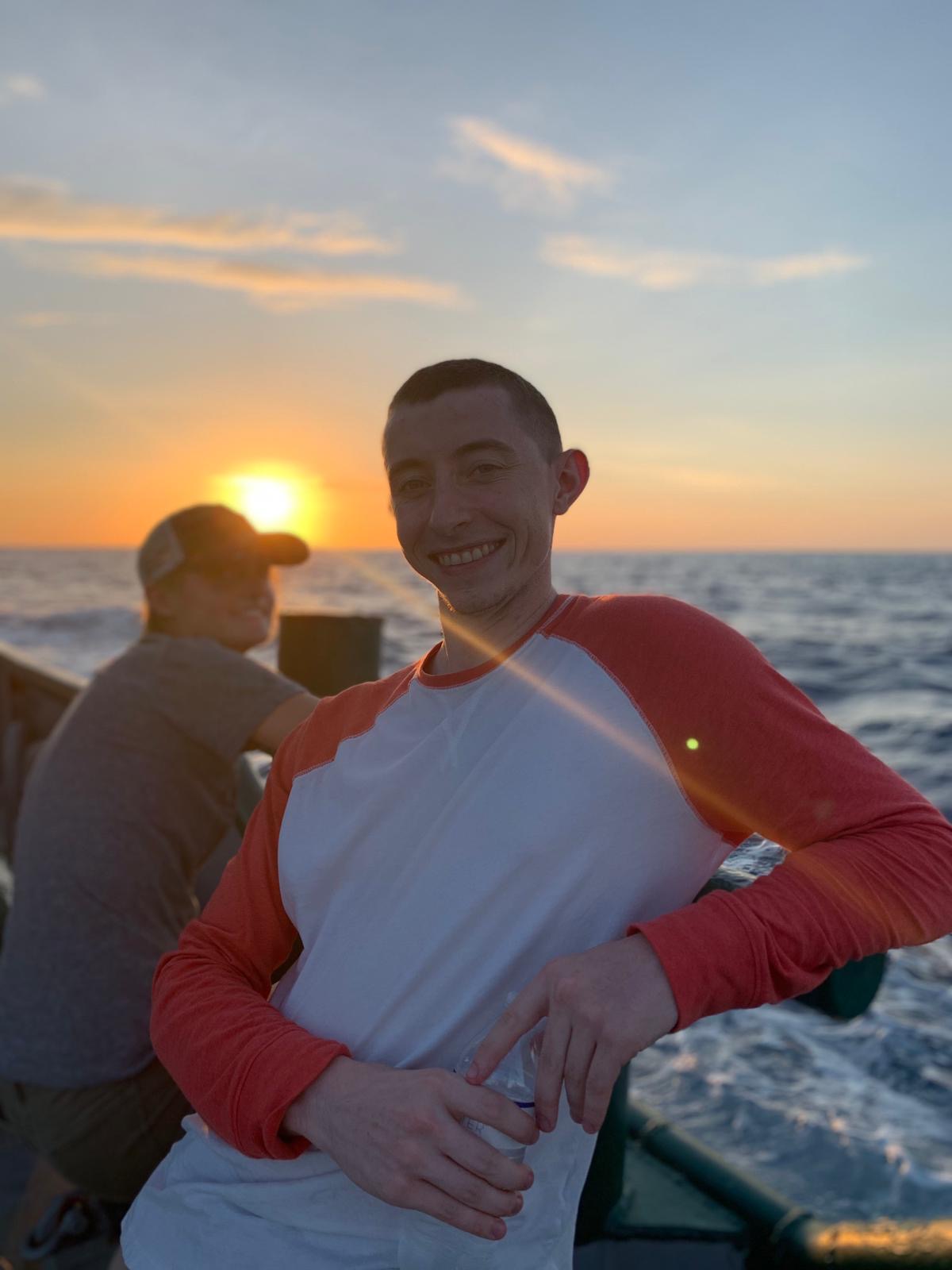Matt Woodstock
Florida International University, USA
ResearchGate; Twitter; DEEPEND; Fisheries and Ecosystem Ecology Lab at FIU
Personal journey into the deep-sea (Did you always know that is what you wanted to do, or start out no a completely different path?). In other words, what unique journey led you to where you are now?
I grew up in the landlocked U.S. state of Wisconsin, so marine biology (much less the deep sea) was not part of the regular curriculum. Initially, I went to college to be a high school Biology teacher, but transitioned into a biology research focus once I participated in a shark and stingray population study during the summer of my junior year. I knew very little about the deep sea until I became a masters student at Nova Southeastern University in the Fall of 2015. There, I worked under Tracey Sutton and Tamara Frank on a gut content and parasite study of mesopelagic fishes in the Gulf of Mexico.
Current research question and why are you interested in this topic?
The main objectives of my current project are to 1) highlight the importance of mesopelagic organisms towards the trophic structure and stability of the entire system, 2) quantify the vertical nutrient transfer of mesopelagic organisms, and advance modeling techniques for use in the oceanic realm. There is an incredible amount of biodiversity in the deep sea and vertical connectivity of organisms. I am interested in advancing our understanding of how this connectivity influences ecosystem processes, particularly the role that vertically migrating organisms have in carbon storage in the deep sea and the importance of mesopelagic organisms to commercial fish stocks.
What have been some challenges in your work or in studying the deep sea in general? Has your research turned out as expected?
The greatest challenge I face when studying the deep sea is that there is plenty of information that we do not yet know. Ecosystem models require/benefit from large amounts of data. Without key pieces of information, our models are more reliant on empirical relationships and information from outside of the Gulf of Mexico, which can weaken our results. From a comparability standpoint, ecosystem modeling efforts have largely been focused in neritic zones (with a few exceptions). However, our models suggest that population trends in mesopelagic organisms do influence the rest of the ecosystem, as would be expected based on available literature.
Why is this work important to you and society as a whole?
In 2010, the Deepwater Horizon oil spill occurred in the northern Gulf of Mexico, bringing the issue of anthropogenic effects in the oceanic zone into the public eye. Unfortunately, there was not a lot of data for the mesopelagic Gulf of Mexico prior to the spill, so the impact of the spill on the deep sea was not able to be assessed immediately. In the face of an environmental disaster, the presence of a pre-existing ecosystem model (and the data that goes into that model) will help managers make science-based policy decisions. Similarly, assessments of commercial fish stocks (tunas and billfishes), which prey upon mesopelagic organisms, could benefit from information regarding prey population trends.
Describe what the deep-sea community is like in your region.
In south Florida, the deep-sea community is highly interconnected and active. I am a part of the Deep Pelagic Nekton Dynamics of the Gulf of Mexico consortium (DEEPEND; www.deependconsortium.org), which is a 19 institution organization. Independent projects by DEEPEND members also extend beyond the Gulf of Mexico. Other consortia, independent research groups, and the National Oceanic and Atmospheric Association (NOAA) also have aspects of their work with a deep-sea focus. In general, each group has their own focus, but the synthesis of this work is collaborative.
What is your current position and what do you like about your current role?
I am currently a PhD student at Florida International University under Yuying Zhang. My favorite thing about being a PhD student at FIU is the community of graduate students we have within the marine science division and the support we receive from faculty. As a student who has basically grown up in the DEEPEND consortium, I appreciate the diverse assemblage of researchers that work on the project. As team members present their work during meetings, it is fun to see separate objectives come together as we start to build connections towards different ecosystem processes.
Advice towards deep-sea biologists.
Opportunities to study the deep sea are uncommon and many people who study the deep sea did not start their careers there. It is pertinent to take advantage of opportunities that are presented and to be open to what is available. Developing a diverse skillset will also extend the amount of opportunities presented in the future, and make you a more desirable candidate in a competitive job market. In academia, an understanding of statistics and/or modeling techniques can be a desirable skill in a candidate. As many consortia build large datasets and other data are publically available, there is a need for people who can elevate these data into products.
Biggest challenge or project you look forward to addressing?
The deep sea is not immune to anthropogenic stressors, and the effect of these actions are on the rise. As we understand more about the life history and physiology of deep sea organisms, we will be able to better parameterize models to simulate the effect of human-caused disturbances. The effects of climate change, oil exploitation, commercial fishing, and deep-sea mining are all ecosystem-based questions that could be modeled. Moving forward, I hope to further develop and refine ecosystem models to address the disturbance ecology of the oceanic realm.
Favorite thing about the deep sea.
My favorite thing about the deep sea is the strange adaptations that organisms have developed to handle a high-pressure, cold, and dark environment. The process of diel vertical migrations still blows my mind, particularly as I think about the distance traveled by each organism and the number of organisms migrating each night. It is amazing to me that a process that seems so costly (in terms of energetics) could be so common in an ecosystem where most organisms are living on the knife-edge of their bioenergetics requirements.



